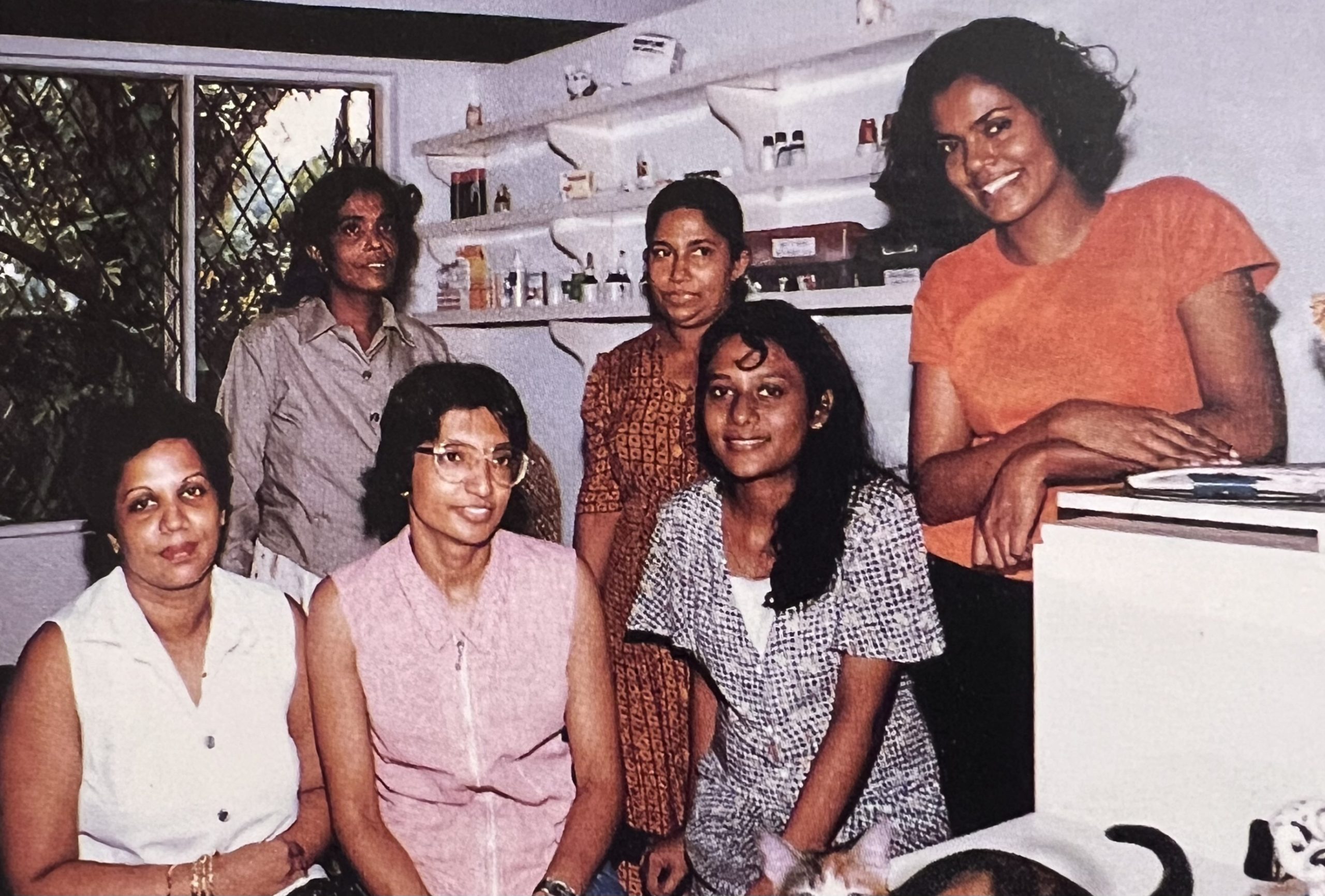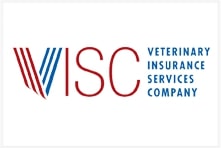This article was originally printed in the May/June 2024 issue of the California Veterinarian magazine.
 I grew up in Sri Lanka, a tiny island country south of India. Often called the “pearl of the Indian Ocean,” Sri Lanka is a tropical paradise. Wild mammals, birds, and snakes live side by side with humans. My garden was a place where you could watch birds feeding their young, butterflies checking out the flowers, caterpillars falling off trees to make their cocoons, and monkeys raiding mango trees.
I grew up in Sri Lanka, a tiny island country south of India. Often called the “pearl of the Indian Ocean,” Sri Lanka is a tropical paradise. Wild mammals, birds, and snakes live side by side with humans. My garden was a place where you could watch birds feeding their young, butterflies checking out the flowers, caterpillars falling off trees to make their cocoons, and monkeys raiding mango trees.
Sometimes cobras slithered along the wall, or deadly vipers hid under flower pots. My whole family was into nature, and we would spend hours outside enjoying the plants and animals sharing the space. At night, a family of mongooses would play tag with their babies on our lawn. Our family dog often barked at the monkeys who came in groups around 2 PM, as they knew that the humans were having a siesta in the afternoon.
My mother and father were interested in science, and our dinner conversations revolved around physics, chemistry, astronomy, and biology. Because of my parents’ influence, I always knew I wanted to pursue science or medicine.
In Sri Lanka, education is free—and, as a result, highly competitive. When I missed medical school by nine points, I was devastated. My brother, who was in medical school at the time, told me not to despair and to pursue veterinary medicine instead, as it has two elements that I love: animals and medicine. So, I went to veterinary school in a beautiful mountainous city in Sri Lanka and graduated in 1995.
In my final year, I told my friends how I wanted to improve veterinary medicine for small animals by owning a hospital with standards similar to those of veterinary hospitals in the United States. Despite that desire, I never thought it would actually happen and instead planned to pursue a Ph.D. in biochemistry at Cornell University. Just as I was about to mail in my application, a colleague called to ask whether I wanted to fulfill my dream of starting the first multi-doctor practice in Sri Lanka.
And so in 1996, we started the PetVet Clinic in Sri Lanka’s capital, Colombo, becoming the country’s first multi-doctor (and all-female) practice. Soon the word of our practice spread, and the Indian High Commissioner brought in his dog, Tashi the Tibetan Terrier, who had severe anemia due to Babesiosis, a tick-borne disease. We gave Tashi the first animal blood transfusion in Colombo. She survived, and our hospital became well-known among all the embassies. A few months later, Sri Lankan President Madam Chandrika Bandaranayake’s Cocker Spaniel was brought to PetVet to be seen for the same disease, Babesia.
After practicing for three years, I knew I wanted to study in the U.S. to improve and share my veterinary knowledge with my colleagues in Sri Lanka. In 2000, I received a scholarship from the president to attend North Carolina State University to complete a nine-month externship under the mentorship of Drs. Bernie Hanson and Bruce Keene. I had to work and study hard to fill the gaps in my veterinary education. I think I read both volumes of Ettinger from front to back. The externship further paved the way for me to do an internship in anesthesia and critical care at Tufts University in Massachusetts.
 I returned to Sri Lanka in 2003 and set up a nonprofit organization to eradicate rabies on the island by means of spay/neuter and vaccinating our stray dog population. Today, the Global Alliance for Rabies Control uses some of our data from that time, as we were able to generate rabies-free zones in Colombo.
I returned to Sri Lanka in 2003 and set up a nonprofit organization to eradicate rabies on the island by means of spay/neuter and vaccinating our stray dog population. Today, the Global Alliance for Rabies Control uses some of our data from that time, as we were able to generate rabies-free zones in Colombo.
I then completed the Educational Commission for Foreign Veterinary Graduates (ECVFG) certification and started working in 24-hour referral hospitals as an emergency veterinarian in Massachusetts, Maryland, and California. While I was practicing in the ER, I got the opportunity to closely observe the function of the ER. The triaging, long wait times, and frustrated clients resulted in overworked employees. I realized that there was a desperate need for urgent care practices, separate from the ER, to better serve clients, patients, and veterinary staff.
To assist in meeting this need, I opened my own urgent care practice in 2022 to serve East Bay pet owners. Efficiency was my motto: save time where I could, and give closer attention to the medicine part so that I could provide better patient care. While my urgent care practice offers the same standard of care as at the ER, the cost of our care is generally less.
My next project is to invite smart and competent foreign veterinarians who are hungry for knowledge and to mentor them so that they can pass the ECVFG exam and be competent to practice in the U.S. Recently, I invited my first foreign veterinarian from Ecuador, who was thrilled to be in a U.S. veterinary hospital. I am in the process of making my own syllabus to prepare them for the exam.
While managing and working at my practice, I also teach the Sri Lankan veterinary community via Zoom and mentor newly graduated veterinarians who work at my Sri Lankan hospital. Now that I am a practice owner, I face new challenges. Sometimes it’s hard, but I always remind myself of all the positive experiences I’ve had in my professional life—opportunities that were given to me and people who helped me get here. I want to thank everyone who helped me achieve my goals, with a special thanks to the CVMA.
My advice to young veterinarians is to be brave and adventurous, pursue your career, and never settle for less but always get help from the experienced and the wise whenever you can.
Dr. Nilanthi Vipuli Kulasekara lives in Berkeley, California with her husband, 14-year-old son, and three cats: Major Tiger, Captain Leo, and Sergeant Pepper.








 I grew up in Sri Lanka, a tiny island country south of India. Often called the “pearl of the Indian Ocean,” Sri Lanka is a tropical paradise. Wild mammals, birds, and snakes live side by side with humans. My garden was a place where you could watch birds feeding their young, butterflies checking out the flowers, caterpillars falling off trees to make their cocoons, and monkeys raiding mango trees.
I grew up in Sri Lanka, a tiny island country south of India. Often called the “pearl of the Indian Ocean,” Sri Lanka is a tropical paradise. Wild mammals, birds, and snakes live side by side with humans. My garden was a place where you could watch birds feeding their young, butterflies checking out the flowers, caterpillars falling off trees to make their cocoons, and monkeys raiding mango trees. I returned to Sri Lanka in 2003 and set up a nonprofit organization to eradicate rabies on the island by means of spay/neuter and vaccinating our stray dog population. Today, the Global Alliance for Rabies Control uses some of our data from that time, as we were able to generate rabies-free zones in Colombo.
I returned to Sri Lanka in 2003 and set up a nonprofit organization to eradicate rabies on the island by means of spay/neuter and vaccinating our stray dog population. Today, the Global Alliance for Rabies Control uses some of our data from that time, as we were able to generate rabies-free zones in Colombo.